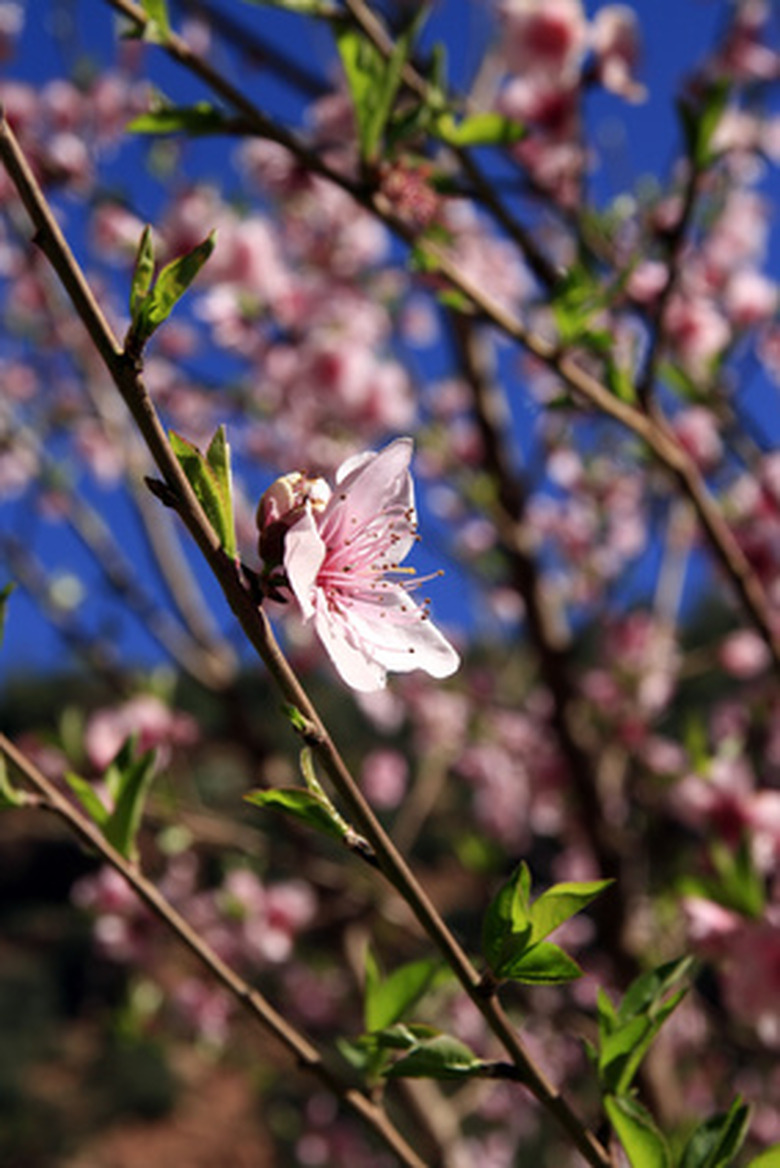How To Grow Almond Trees In Washington
Almond trees are native to the Mediterranean climate of the Middle East. They thrive in areas that have warm, wet winters and hot, dry summers. Unfortunately for the almond tree, most of Washington State is too cold or too wet. Almond trees will grow outside in the southeastern parts of the state, though, where winters are not too cold and summers are hot and dry. If you live in the Pacific Northwest or the cold northern areas of the state, plant your almond tree in a pot, keep it pruned and bring it inside when rain and cold weather threaten.
Step 1
Dig a hole that is twice as large as the root ball of your young almond sapling. Choose an area that gets full sun and has sandy loam soil.
- Almond trees are native to the Mediterranean climate of the Middle East.
- If you live in the Pacific Northwest or the cold northern areas of the state, plant your almond tree in a pot, keep it pruned and bring it inside when rain and cold weather threaten.
Step 2
Put three or four shovels of rich organic compost in the bottom of the hole and mix it into the soil. Rich, nutritious soil is important to reduce transplant shock and get your tree growing well from the beginning.
Step 3
Place your almond sapling in the hole with the base of the trunk level with the ground. Dig out or fill in soil if necessary.
Step 4
Fill in the soil around the root ball a few handfuls at a time. Pat down the soil as you go to eliminate air holes around the roots. Air pockets can cause the roots to oxidize and increase the chance of root rot.
- Put three or four shovels of rich organic compost in the bottom of the hole and mix it into the soil.
- Pat down the soil as you go to eliminate air holes around the roots.
Step 5
Water the newly planted sapling allowing the water to penetrate to the base of the root ball. Set the hose on a mist or drip setting and allow the water to run for an hour. The water will slowly penetrate the soil without draining off.
Step 6
Water once a week after the tree is established. If it is rainy avoid watering. Almond trees do better a little dry then wet. Feel the soil before watering, if it still feels damp to the touch, put off watering for a few more days.
- Water the newly planted sapling allowing the water to penetrate to the base of the root ball.
- Set the hose on a mist or drip setting and allow the water to run for an hour.
Warning
If your soil has heavy clay-like consistency, build up a planting mound with sandy well draining soil and plant your almond tree on the mound. This will allow water to drain away from the roots and prevent potentially deadly root rot. Almond trees are either male or female trees that must be close enough to cross-pollinate for fruit production. Plant several trees close to each other if you want a harvestable crop.
Things Needed
- Shovel
- Compost
- Planting pot (optional)
- Coarse sand (optional)
- Peat Moss (optional)
